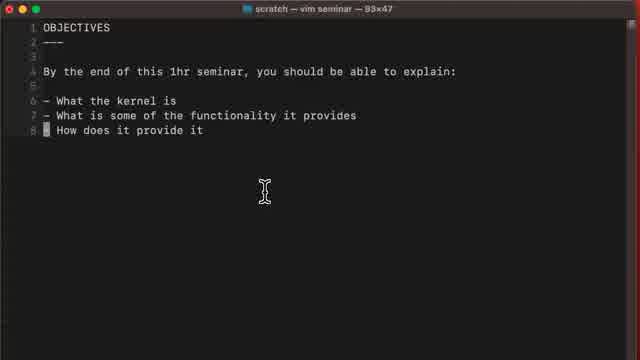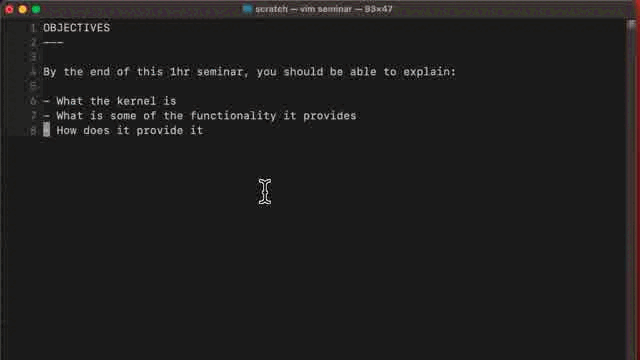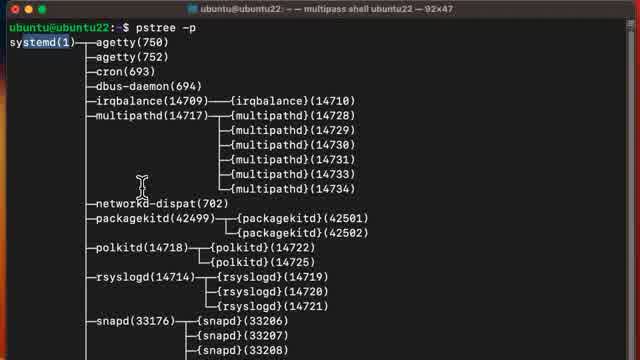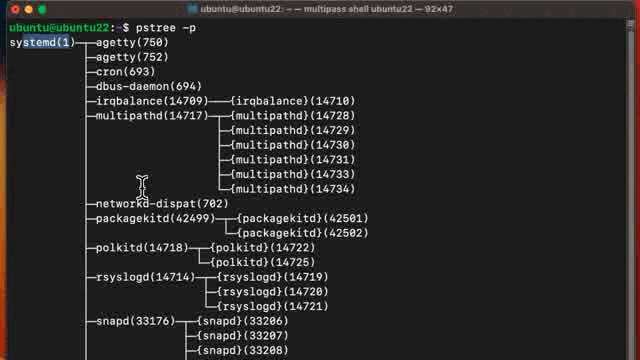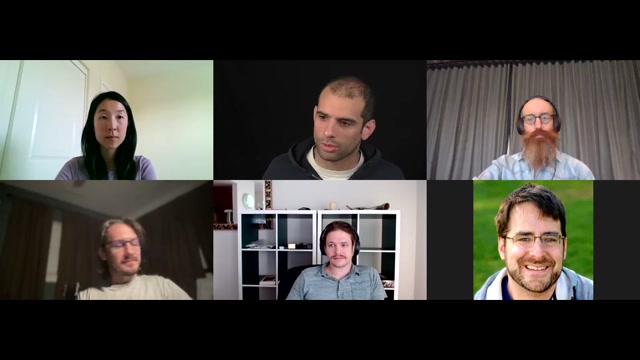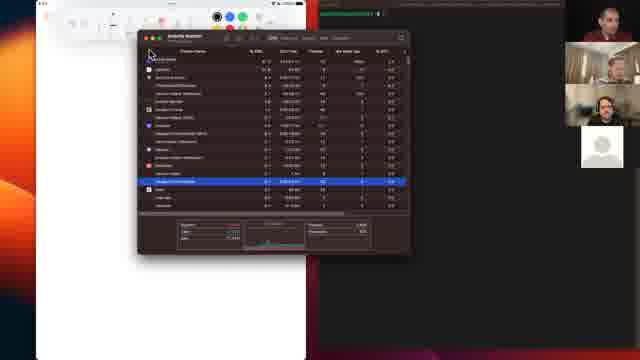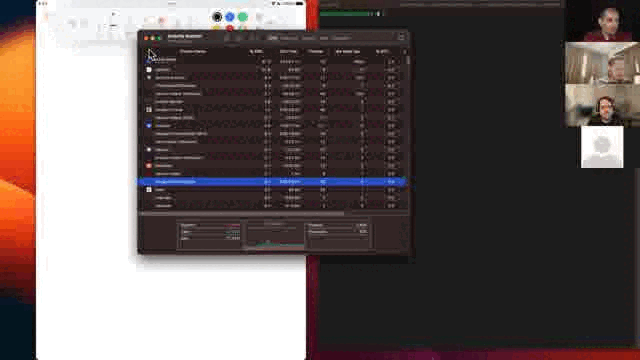Operating Systems
If you want to travel around the world and be invited to speak at a lot of different places, just write a Unix operating system. Linus Torvalds The goal of this course is to help you understand the most important piece of software that almost every program interacts with: the operating system.
Each module will cover both conceptual foundations and practical considerations for software engineers. You will write short programs and ask yourself "How is the operating system making this happen? How does my conceptual understanding explain the behavior I'm seeing?" You should leave each one with a better overall understanding, and discover new ways to make your programs more efficient and secure
 At the core of this course are the sequences of problems for each topic. You should aim to solve each problem yourself, using the worked solutions and supplementary explainers as needed. While no textbook is strictly necessary for this course, we highly recommend Operating Systems: Three Easy Pieces ("OSTEP") as a supplement, and suggest specific chapter to read in conjunction with each set of problems. We also suggest further resources from Computer Systems: A Programmer's Perspective for those who already have a copy, as well as other relevant resources throughout.
At the core of this course are the sequences of problems for each topic. You should aim to solve each problem yourself, using the worked solutions and supplementary explainers as needed. While no textbook is strictly necessary for this course, we highly recommend Operating Systems: Three Easy Pieces ("OSTEP") as a supplement, and suggest specific chapter to read in conjunction with each set of problems. We also suggest further resources from Computer Systems: A Programmer's Perspective for those who already have a copy, as well as other relevant resources throughout.
Most of the topics we discuss will be broadly applicable to all operating systems, but where we need to get concrete we will focus on the Unix family of operating systems, and ultimately through the lens of GNU/Linux operating system, which we encourage you to run, if needed, as a virtual machine.We chose this operating system because of its popularity, and the availability of its entire source code. This isn’t a "Linux Course", and most problems could be done on other operating systems, with some specific exceptions like those relating to containers (a Linux-specific concept). The same general principles tend to apply although specific interfaces can vary dramatically. No knowledge of Linux is required to take this course.
Important note: we strongly recommend that you complete most of Computer Systems or an equivalent course before this one. Many topics such as basic computer architecture and C familiarity are taken as assumed knowledge. You are of course welcome to try this course and cherry pick topics from Computer Systems to fill in gaps as you go. A number of problems will be most straightforward to complete in a compiled "systems" language such as C, C++ or Rust, although you are welcome to attempt them in any language.
For more suggestions on how to approach CS Primer, see the how-to guide.
Introduction
This first module is designed to provide a first exposure to three of the most important responsibilities of the operating system: enabling multiple tasks to run on the same CPU, providing a virtual address space to processes, and abstracting over persistent storage by way of a file system. We also use it as an opportunity to briefly discuss some core concepts like system calls and context switches, and use tools like strace. All of these topics will be covered in more depth as we go. These problems should provide some context and serve as a warmup.
Before starting, we suggest that you read chapter 2 of OSTEP: Introduction to Operating Systems. You may also wish to install Linux in a virtual machine using something like qemu or a convenience wrapper like Multipass.
Problems
| CPU timing | measure time spent in the kernel vs user space (55:06) |
| Stack overflow | write a short program to cause a stack overflow, and closely watch what happens (42:12) |
| Byte write | write a byte at a time to a file, and log whenever the file takes more space on disk (22:46) |
Seminars
Explainers
Programs and Processes
From the perspective of the operating system a "program" is some data in storage that conforms to the system’s executable file format. A process is a running program and perhaps the most important abstraction we will investigate during this course. Once processes are running, a core responsibility of the operating system is to manage process lifecycles, including scheduling themTechnically on a system that supports threads, it is a "thread" that is scheduled. You can think of a process as "having" one or more threads of execution which can be scheduled independently while sharing the same address space, or equivalently you could use Linux's terminology of a "task" being a schedulable entity which may or may not share memory mappings with another task. onto the CPU when appropriate.
This series of problem covers everything from the expected program structure, the operating system's role in loading and executing programs as processes, and the process life cycle. As part of this, we will also cover exceptional control flow, as the mechanism required to run both an operating system and user processes securely on the same machine. Scheduling is covered in the next section.
For supporting material, we suggest chapters 4 to 8 of OSTEP, particularly chapters 4 (Processes) and 5 (Process API). For those using CS:APP, we suggest chapters 7 ("Linking") and 8 ("Exceptional Control Flow").
Problems
| Signalbox | use signals to detect when your terminal window resizes (33:30) |
| Signal logger FREE | given a program that logs any received signal, trigger as many as you can! (1:09:06) |
| Custom shell: basic execution | write a very basic shell program that executes child processes (57:32) |
| Custom shell: pipes | extend your shell to support pipes (1:06:29) |
| Custom shell: job control | extend your shell to support background jobs and job control (1:39:46) |
Seminars
Explainers
Threads, Concurrency and Scheduling
A process is a running instance of a program, but what if we wish to have more than one thread of execution, for instance to utilize multiple CPU cores? We could create multiple processes, but this would make it hard for each to communicate, as they would each have their own address space. Threads were created as a lightweight mechanism to support multiple executing "units" that share a single address space.
In this module, we explore the operating system's thread API, but also use it as an excuse to consider the idea of concurrent programming more broadly, including the hazards of race conditions and deadlocks. The problems should both help you understand the operating system thread model and concurrency primitives, and also develop the skill of concurrent programming.
This is also the context in which we consider scheduling, although we also could have done so in the previous module on processes, since scheduling is and important concern from the operating system's perspective even if each process is single-threaded. However as a user, many scheduling considerations are more relevant when considering multi-threaded programs, and it allows for more interesting practice problems!
For supplementary material, we suggest OSTEP chapters 26: Concurrency and Threads, 27: Thread API and 28: Locks.
Note from Oz: I am actively working on these problems right now, so they may change without much notice
Problems
| Threaded counter | fix the simplest possible concurrency bug (18:09) |
| Multi-threaded mergesort | practice concurrent programming by speeding up a merge sort (58:24) |
| Multi-threaded fizzbuzz | make the classic interview question a little more fun with concurrency! (25:17) |
| Ring buffer | implement a job queue with concurrent readers and writers (1:09:21) |
| Thread race | visualize a race between multiple threads to complete independent tasks |
| Unfair thread race | help one thread "cheat" by adjusting the scheduler priority |
Seminars
Explainers
Virtual memory
You will have already encountered many aspects of virtual memory in the previous modules, but in this one we'll do a deeper dive into the various hardware and software concepts involved. We'll also examine the interface presented by the OS to manage and manipulate the virtual memory subsystem, and consider how these can be used to increase performance and in some cases simplify persistence.
As supplementary material, we suggest OSTEP chapters 13 Address Spaces and 18 Paging.
Problems
| Basic mmap | use a shared memory mapping to communicate between two processes (17:39) |
| Shared memory stream | speed up data transfer between to processes by using shared memory (54:04) |
| Custom malloc | implement your own memory allocator to better understand memory management (1:26:51) |
Explainers
File systems
While you may already have plenty of experience with the file system as an end user, in this module we'll focus on how abstractions like "files", and "directories" are actually implemented, and sometimes used in surprising ways.
As supplementary material, we recommend OSTEP chapters 39 Files and Directories and 40 File System Implementation.
Problems
| Custom ls | as a first exposure to some file system APIs, write a clone of ls (36:39) |
| Mystery file | find a secret message in a mysterious file (22:12) |
| Custom file system | write a novelty file system with FUSE (1:01:31) |
Explainers
Virtual Machines and Containers
Our final module covers two technologies with distinct purposes which tend to be conflated. Virtual machine monitors (or “hypervisors”) are a decades old technology for running multiple operating systems on the same machine, by providing a virtual machine interface to each of them. Containers are a higher-level, lighter weight construct for isolating groups of processes running within the same operating system.
We will explore both in the following problems, including a basic implementation of containers.
Problems
| Container: chroot | isolate part of the filesystem, as a starting point for a container runtime (28:55) |
| Container: namespaces | meaningfully isolate your contained processes with Linux namespaces (1:01:59) |
| Container: cgroups | use control groups to limit unwanted resource usage (32:35) |
| Container: extras | capabilities, system call blacklisting and other considerations (27:15) |
